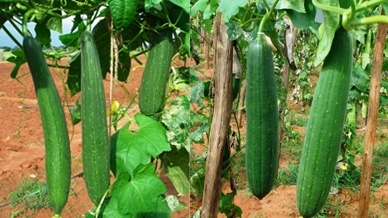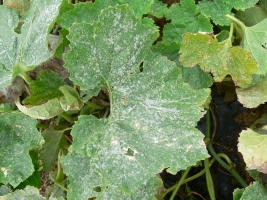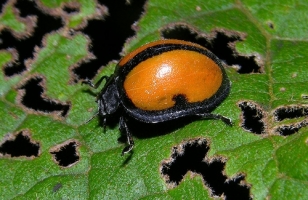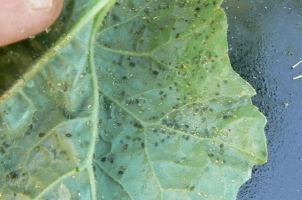PSG-9 (2005): The vines are medium in length and have dark green leaves. Smooth, long, tender, and dark green, the fruits are. From transplanting to the first picking, it takes 60 days. The average fruit weight is 65 g, with a yield of 65 q/acre.
Punjab Nikhar (2020): has medium-length vines with intermediate internodal length. The leaves are medium in size and green in colour. The fruits are slender, smooth, tender, long, light green, and have creamish white seeds. From transplanting to the first picking, it takes 43 days. It has an average fruit yield of 82 q/acre.
Pusa Chikni: This variety has dark green leaves, a medium-sized plant, and medium-sized fruit. The fruits are smooth and tender, with a thickness of 2.5-3.5cm. It produces 35-40 qtl/acre on average.
Azad Toria-2: It is recommended to grow in Punjab, Uttarakhand, Jharkhand, Bihar, and Tarai region of U.P.
Pusa Supriya: It is recommended to grow in Punjab, Jharkhand, Bihar, U.P., Gujarat, Haryana, Delhi and Rajasthan regions.
Punjab Kaali Tori-9: Released in 2005. It gives an average yield of 65qtl/acre. It has long, soft and dark green color fruits. The first harvesting is done after 60 days of sowing.
VARIETIES DEVELOPED BY ICAR IIHR BANGLORE
Arka Vikram: Hybrid developed by crossing the inbreds, IIHR-6-1-1 x IIHR-53-1-3. Early flowering hybrid (46 days for first picking), green, long, tender fruits, excellent cooking quality, nutritionally rich in antioxidant activity and minerals like potassium, calcium, iron, zinc and manganese. Yields is 136q/acre in 120-135 days.
Arka Sumeet: Developed by pedigree method of breeding between IIHR-54 X IIHR-18 followed by selection. Lush green and tender long fruits (50-65 cm) with prominent ridges and delicate aroma. Good transport and cooking qualities. Yield 200 q/acre.
Other state varieties:
Pusa Sneha: The variety is developed in 2004 by Indian Agriculture Research Institute (IARI). It contains medium long size fruit which is smooth and is dark green in color having blackish green color strips on it. The variety is resistant to high temperature. Spring and rainy seasons are best for crop production. Harvesting is mainly after 45-50 days of sowing.
Azad Toria-1: It is recommended to grown in Uttar Pradesh regions.




















